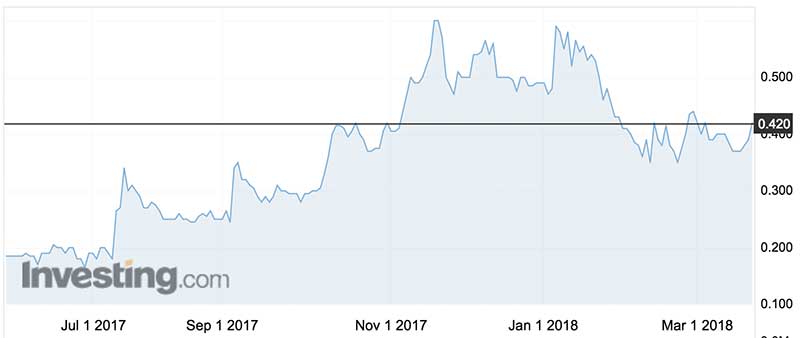Why Blackstone Minerals is a Little Gem among cobalt stocks

Pic: Tyler Stableford / Stone via Getty Images
Blackstone’s Canadian cobalt grades leave other cobalt stocks behind — and a new drilling operation is only weeks away, writes Barry FitzGerald in his weekly Garimpeiro column.
Devoted followers of the runaway cobalt price — a response to supply deficits for the critical lithium-ion battery metal — probably need to have 80 or so cobalt stocks here and overseas on their watchlists. (There’s a list here of about 50 ASX-listed cobalt stocks).
But there are some standouts, for one reason or another.
Blackstone Minerals (ASX:BSX) is one of those.
It’s a standout because of its pick-up late last year of the super high-grade Little Gem project near Whistler in British Columbia, Canada.
It’s not just the cobalt grade that makes Little Gem — mined in 1930s on a small scale — a standout in the cobalt pack.
It is also comes with a high grade, a handy offset if the runaway cobalt price (which climbed through $US90,000 a tonne earlier this week) ever comes back to earth.
Because of its historical high grades, the local market was keen as it could be for Blackstone to punch some drill holes in Little Gem before last Christmas.
The bad news was that the drilling rig more or less blew up half way through drilling the first hole for Blackstone, and then the northern winter set in.
But there was also good news. Assays from the “half a hole’’ included best hits of 4.3m grading 1 per cent cobalt and 15 grams of gold a tonne, including 1.1m grading 3 per cent cobalt and 44g/tonne gold.
The results were consistent with historic drilling and channel sampling of the 1930s workings which returned average grades of 3 per cent cobalt and 20g/tonne gold.

The cobalt grade leaves the grade of projects held by the 80 cobalt stocks on that watchlist mentioned above well and truly in the shade.
The same can be said of the gold grade.
But the question is how big is Little Gem — and are there more of them in the district?
Blackstone — and the followers of the stock — are itching to find out. A new drilling program is now only weeks away, and the company has hooked up with drilling operators who don’t go home when it gets cold.
Blackstone has not yet said what the new drilling program will involve. But a six to 12 hole program along 300m of strike, and to depths of 150-200m, plus some step-out holes from the immediate zone of interest, would not surprise.
The company should know pretty quickly what it is dealing with once the program is completed.
Drilling the immediate zone of interest won’t be the end of the story though.
Blackstone has good geological reasons to think Little Gem is but one sweet pod on the 48km of untested strike potential that it has assembled.
What’s more, the geology is analogous to the Bou-Azzer district in Morocco where 100,000 tonnes of cobalt has been mined over the last 75 years from 50 different deposits.
They are on the smallish side but they are numerous — and the grade (1.3 per cent) means they enjoy strong margins. It is a model Blackstone hopes will unfold along its 48km strike of prospective rocks.
> Bookmark this link for small cap breaking news
> Discuss small cap news in our Facebook group
> Follow us on Facebook or Twitter
> Subscribe to our daily newsletter
But first it is out to confirm a resource at Little Gem in quick fashion.
It is a good time to be drilling for cobalt (and high grade gold).
The current price of $US90,000 a tonne compares with $US22,000 a tonne two years ago.
The price nevertheless remains short of the 2008 high of $US115,000 a tonne, the last time supply of the metal was in deficit.
Blackstone last traded at 42c a share.
Before Little Gem arrived on the scene, Blackstone’s main focus was gold and base metals in Western Australia.
Its Silver Swan South gold project near Kalgoorlie remains one to watch. Blackstone describes it as an “emerging’’ gold discovery, located as it is some 8 km along strike from Northern Star’s Kanowna Belle Gold Mine (5 million oz gold endowment).
The market is not too interested just yet because it is not cobalt, and because it is early stage stuff.
Still, a drilling program is due to start in the June quarter — and based on previous results, it will also be worth watching.
UNLOCK INSIGHTS
Discover the untold stories of emerging ASX stocks.
Daily news and expert analysis, it's free to subscribe.
By proceeding, you confirm you understand that we handle personal information in accordance with our Privacy Policy.








